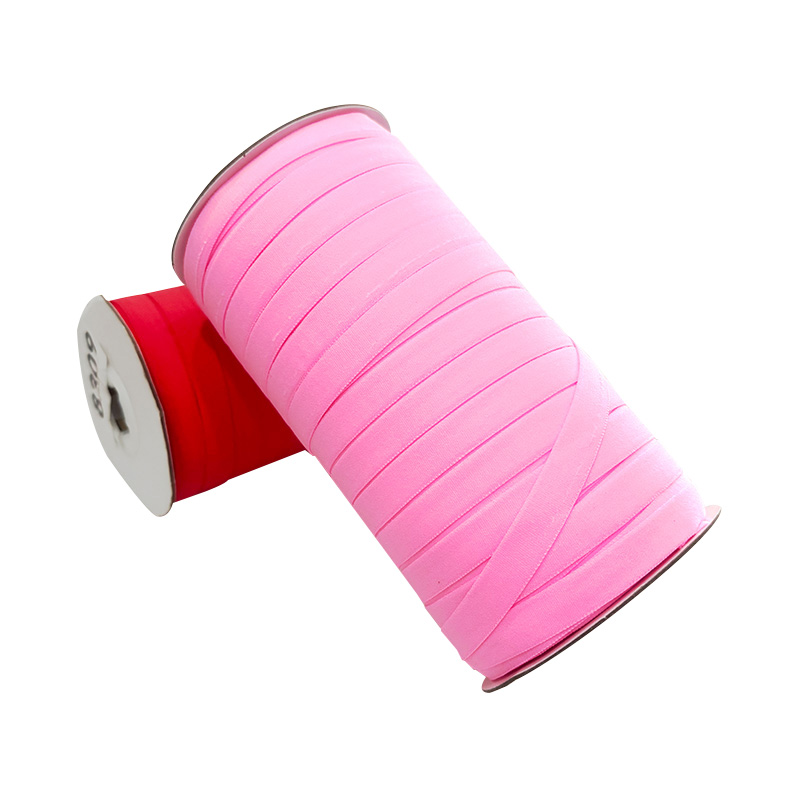Industry
 By Admin
By Admin
Weaving Patterns That Enhance Elastic Performance
When it comes to creating elastic materials that perform well in various applications, the weaving pattern plays a crucial role. Whether it's a fabric elastic band used in apparel, a printed elastic ribbon for decorative purposes, or a knitting elastic band designed for stretch and recovery, the way these elastics are constructed directly affects their durability, flexibility, and overall comfort.

A fabric elastic band is a versatile component widely used in garments to provide both support and stretch. The weaving technique used for such bands can influence how well the band retains its elasticity after repeated use. For example, a tighter weave can offer stronger resistance to stretching out, making the elastic band ideal for waistbands and cuffs that undergo constant movement. On the other hand, a looser weave might be more suitable for applications where softness and flexibility are priorities.
Printed elastic ribbons add an aesthetic dimension to elastic materials. These ribbons often combine functional elasticity with creative designs, achieved by applying patterns or logos onto the surface. The weaving pattern beneath the printed layer must be stable enough to hold the shape of the ribbon while allowing the necessary stretch. When the weave is carefully selected, the printed elastic ribbon maintains its form and visual appeal even after multiple stretches and washes. The printing technique itself must also complement the weaving, ensuring the design does not crack or fade easily.
Knitting elastic bands presents a different approach compared to woven fabric elastic bands. These are made by interlocking loops of yarn, which provides inherent stretchiness and a soft texture. The knitting pattern affects the elasticity, breathability, and strength of the band. For example, rib-knit elastic bands tend to have a more pronounced stretch and recovery, which is valuable in activewear and sports apparel. The knitting elastic band's structure can be adjusted to control the amount of stretch and support based on the intended use.
One important factor when choosing or manufacturing any type of elastic is the balance between strength and comfort. The weaving patterns of fabric elastic bands must allow for enough give without compromising durability. Similarly, the printed elastic ribbon's weave needs to support both the elasticity and the printed design's longevity. Knitting elastic bands, by virtue of their looped construction, offer a natural stretch but require specific knitting patterns to ensure they do not lose shape quickly.
Another consideration is the way these elastics behave under stress. For example, fabric elastic bands with herringbone or twill weaves may provide a firm grip on fabric and resist twisting, which is crucial for garments that undergo frequent wear. Printed elastic ribbons with a stable weave prevent distortion of printed images during stretching. Knitting elastic bands can use patterns such as ribbing or interlock to manage the tension and prevent overstretching.
Durability over time is also influenced by the weaving or knitting pattern. Elastic materials are exposed to stretching, washing, and friction, all of which can cause wear. A well-chosen fabric elastic band pattern will wear less and maintain elasticity. Similarly, printed elastic ribbons need a base weave that supports the printed surface without peeling or cracking. The knitting elastic band benefits from a pattern that can withstand repeated stretching cycles while maintaining softness.
In practical terms, manufacturers often experiment with weaving and knitting techniques to meet the specific needs of their clients. For instance, a fabric elastic band designed for heavy-duty applications like workwear might use a dense weave with strong yarns. In contrast, a printed elastic ribbon meant for fashion accessories might prioritize a smooth weave that enhances print clarity. Knitting elastic bands can be tailored by varying loop sizes and stitch types to achieve the desired stretchiness and support.
The choice of materials also interacts with the weaving pattern. Combining elastic fibers like spandex or latex with polyester or cotton yarns can affect the performance of fabric elastic bands. The weaving pattern must accommodate these fibers to ensure the band performs as expected. Printed elastic ribbons, often made with polyester bases for durability, rely on weaving patterns that support printing techniques such as sublimation or screen printing. Knitting elastic bands benefits from yarn blends that optimize both stretch and softness.
In summary, weaving patterns are a key element in enhancing the performance of elastic materials. Whether it's a fabric elastic band designed for strength and stretch, a printed elastic ribbon combining function and decoration, or a knitting elastic band offering natural flexibility and softness, the structure created by weaving or knitting determines many aspects of the product's use and longevity. Paying close attention to these patterns allows manufacturers and designers to create elastics that meet various needs without sacrificing comfort or durability.



 English
English Español
Español عربى
عربى Tiếng Việt
Tiếng Việt

